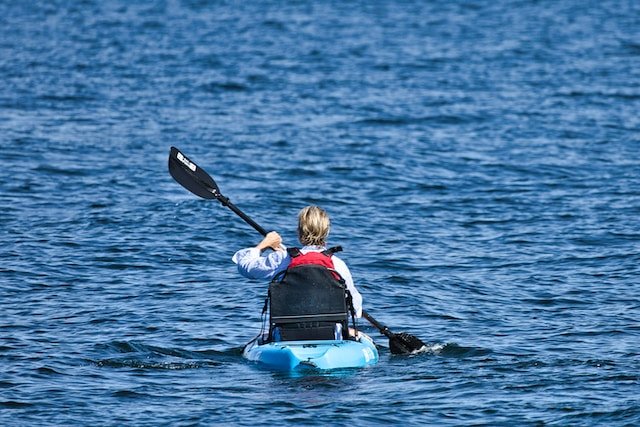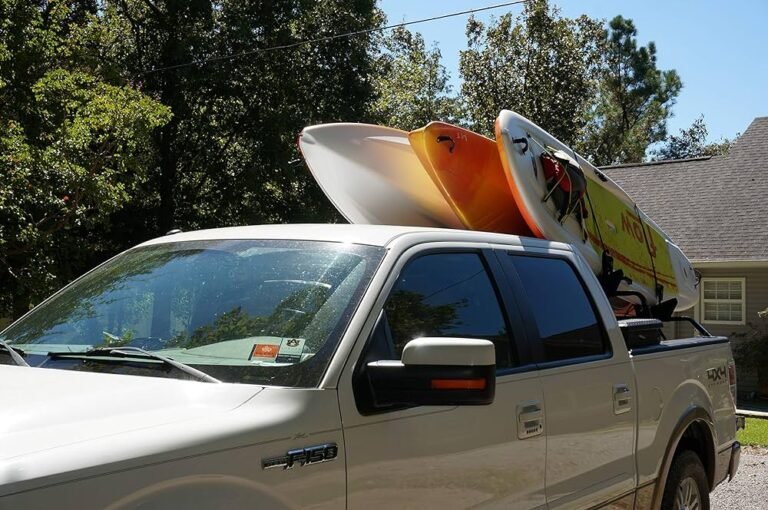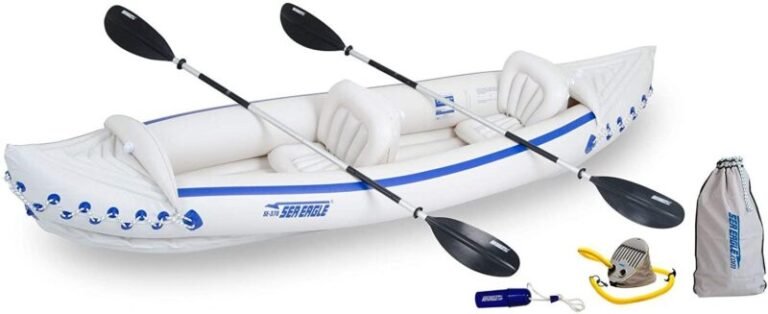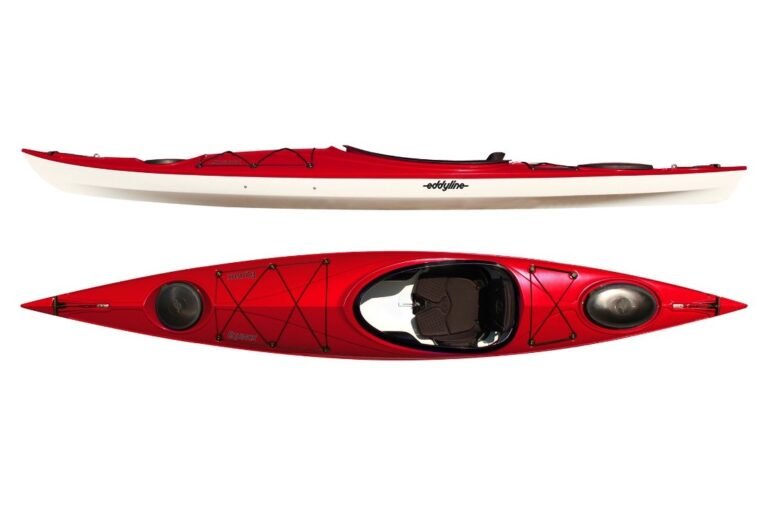How To Portage A Kayak
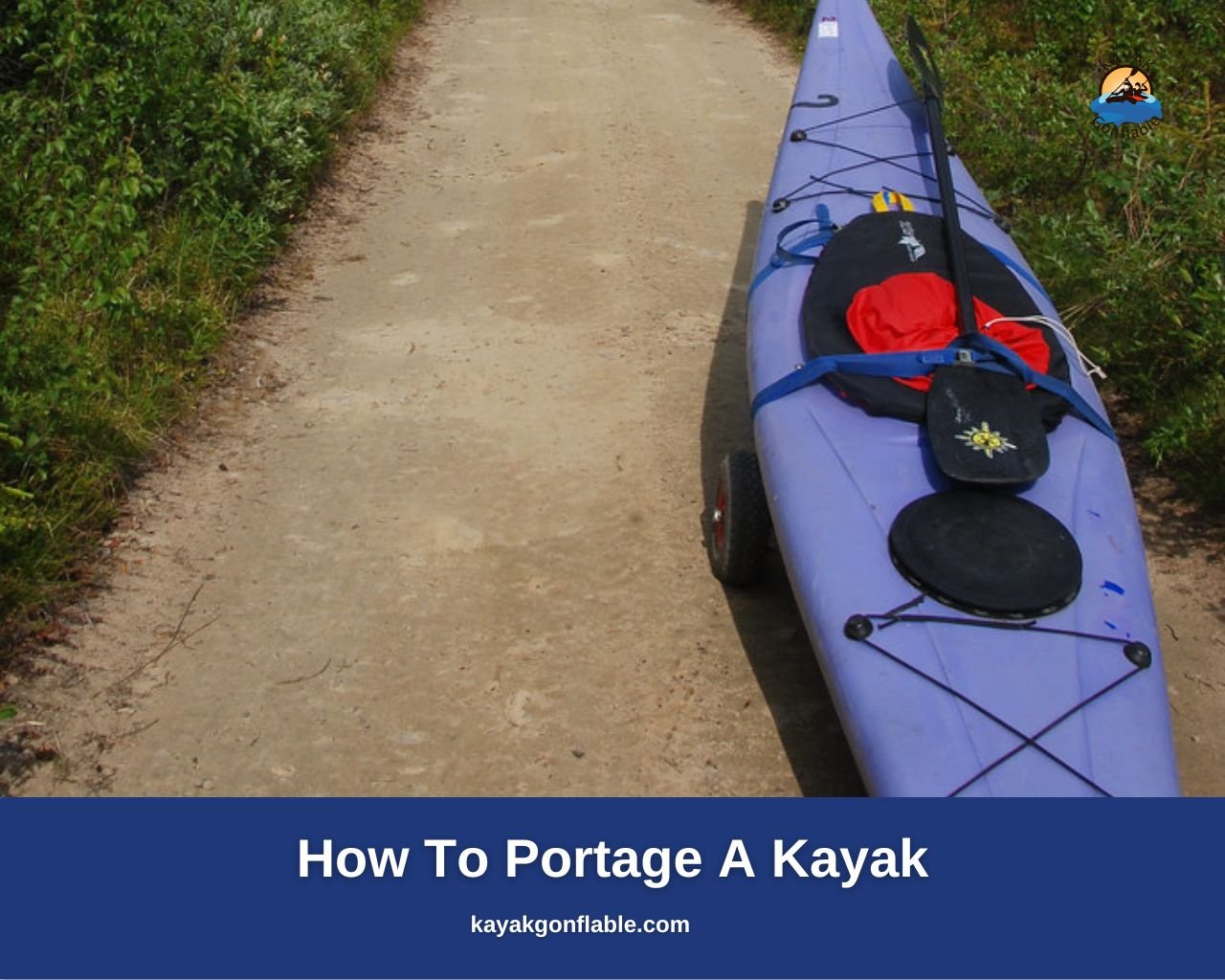
Kayaking is undeniably fun and a great way to get a workout and see some beautiful scenery. However, paddlers sometimes have to carry their vessels from one point to another on their trip, and portaging a kayak can be challenging as kayaks are typically heavy and difficult to carry.
This article helps you approach portaging your kayak from another angle to help make your trip more enjoyable.
What Is Portaging?
Portaging is the act of transporting goods or people overland between two points. It can be done on a river or lake, as well as on land.
The purpose of portaging is to reduce the number of trips needed to get from one place to another. There are different types of portages, depending on the terrain.
Portaging is a technique used by canoeists and kayakers to transport their vessels across rivers and lakes. It’s a way to get around difficult sections of water, and it’s also a great way to explore new territory.
Paddlers often portage around cliffs, rapids, and other obstacles while carrying their watercraft on their backs.
When To Portage A Kayak?
Portaging a kayak is a popular way to navigate difficult waterways. There are many factors to consider when deciding when to portage a kayak:
- The length of the portage (the distance to cross lets you know if portaging is worth it)
- The condition of the water (rough water or rapids are usually signs to portage your watercraft)
- The type of kayak (this deals with the kayak’s weight and how best to portage the vessel)
- Your experience (how often you’ve portaged a vessel before lets you know if you are up to the task this time).
You should always consult local maps and reference materials before embarking on a portage.
Portaging a kayak can be a great way to save energy and time when traveling through difficult waterways but tricky terrain is not the only time when you have to portage your watercraft. Some instances when portaging is necessary include:
- Moving your kayak from your vehicle (car, truck, etc) to the water or from the water to your vehicle.
- If the water is too deep or fast-moving for your kayak to navigate easily.
- If you need to cross a difficult obstacle, like a wide river or rocky stream bed that is best crossed on land.
- If the water is too rocky or shallow for your kayak.
- If you are exploring a remote area.
- If you are on an adventure where you navigate different water bodies that have portage routes between them.
Tips For Portaging A Kayak
Before you go kayaking and need to portage your vessel on a trip, you should keep these tips in mind.
1. Plan Your Route Ahead Of Time
Before embarking on any trip, gathering information on the routes to take is crucial especially if you will be carrying loads.
You should scout your intended route either physically or digitally before embarking on your trip. Digital scouting involves the use of maps and technology like GPS systems to get all relevant information regarding your portage route.
Physical scouting though considerably harder and more taxing than the digital version gives you a better perspective on not only the portage route but also on the launching point for your kayak once at the destination.
Scouting physically without your kayak also gives you an idea of how long it would take you on average to move your kayak from one point to the other and how many rest breaks you should take.
2. Remove Water From The Kayak
Portaging kayaks is challenging because kayaks are inherently heavy so you should always drain any water that might have found its way into your vessel before portaging the kayak as any such water will make the task more difficult for you.
Sit-on-top kayaks can be easily drained of water through their scupper holes while sit-inside kayaks can be drained similarly by pulling the plugs on their drain holes.
3. Remove Unnecessary Gear
Just like water sloshing around in your kayak would make the portaging trip difficult and uncomfortable, leaving gear in your kayak increases its weight and makes portaging difficult.
Always remove all unnecessary gear and put them in a backpack or dry bag to help reduce the load in your kayak and make portaging easier.
It also eliminates the risk of some equipment falling out of the watercraft while moving it from one place to the other.
4. Practice
If you want to get better at portaging kayaks, a good way to do that is to practice.
The saying “Practice makes perfect” rings true here because as kayaks are quite heavy, constantly practicing carrying your kayak at home will help you build the strength and endurance necessary to easily accomplish the task when you are to portage your kayak.
You can practice portaging your kayak in your yard or neighborhood. Practice lifting the vessel overhead to get a sense of its weight and your balance.
Move around with the kayak to get a feel of portaging the kayak keeping in mind that portaging on a trip will most likely be more difficult. If you practice enough, you will notice that portaging your kayak will be quite easy when you have to do it on a portage route.
5. Be Aware Of Your Surroundings.
Another important tip is to be aware of your surroundings at all times.
It is crucial to keep an eye on the environment so you will be able to easily notice and avoid all possible hazards while portaging your kayak especially when the terrain is not favorable and you are not familiar with the area.
Be polite to other kayakers should you see them on the route while maintaining a positive attitude and you should be fine.
6. Pack Light
If you will be embarking on a kayaking adventure where you will have to portage the vessel, consider packing light that is taking only essential gear with you on your trip.
Remember that kayaks are heavy on their own and the more gear you have with you, the longer the portaging time will be and you might have to make multiple trips in the worst-case scenario.
This is dangerous as not everyone on the road may be nice and some may help themselves to your gear.
To better keep an eye on your belongings, it is advisable to pack only necessary things or things you are sure you can portage together with your kayak in a single trip. Packing light also helps you save time.
How To Portage Your Kayak
Use A Kayak Cart
Kayaking isn’t all about paddling. Sometimes you need to carry your kayak over a short distance and that can be challenging as kayaks are quite heavy and awkward to carry.
A kayak cart is an easy way to portage your kayak. Carts are designed specifically for portaging kayaks, and they make carrying your vessel much easier. You can buy a kayak cart or build one yourself if you desire to.
There are several types of kayak carts on the market to cater to the different types of kayaks available. The most common kayak cart is the fold-up type.
This cart has two wheels and folds up for easy storage so you can continue your trip after portaging your kayak. Here are some reasons why using a kayak cart is a smart idea.
- It can help you move your kayak from one spot to another easily with minimal stress.
- A kayak cart will save you time and effort on your trip.
- Kayak carts can be used on all sorts of terrain while portaging the vessel so they are always useful.
- Kayak carts are especially useful for those with medical issues with their backs, shoulders, knees, or other ailments that will make portaging a kayak with raw strength dangerous for them.
The next time your kayaking trip includes a portaging route, consider procuring a kayak cart to make the trip easier for you.
Use Your Kayak’s Carry Handles
Many kayaks come with carry handles on the bow and stern of the vessel with some even having handles on the side of the kayak to help with portaging.
The handles provide a convenient place for the kayaker to hold on to while moving the kayak and enable two paddlers to easily move the kayak with a paddler holding onto the bow handle while the other holds onto the stern handle.
Kayak carry handles can also be helpful if you are using a cart to portage your kayak. The handles will help you to easily load the vessel onto the kayak cart.
You should load the kayak with the stern on the cart and then use the bow handles to pull and steer the kayak and cart. This combination makes for an easy way to portage your kayak.
Carry handles really make life easier as they can be used to portage two kayaks at the same time. Perhaps you are out with a friend or relative each of you with his kayak and have to portage them across a distance.
All you need to do is designate a paddler to handle the bow handles of the kayaks while the other paddler holds on to the stern handles of the kayaks and then moves. By walking at a pace that suits both of you will be able to save time and portage both kayaks easily.
You should, however, keep in mind that while this method is effective and time-saving, portaging two kayaks this way can be strenuous on your body, particularly your back and shoulders.
If you are not in a hurry or wish to reduce the strain on your body, you can portage each kayak separately with one person holding the handles on each end of the vessel. Remember however that while the alternative is less strenuous on the body, it also takes more time.
Use Brute Force
The last way to portage your kayak is through the use of brute force. As the name implies, you have to be sure you have the strength required to go down this route so this method is not for everyone.
Here you simply carry your kayak overhead and start the trek to your destination. As kayaks are inherently heavy, this method easily makes you tired and can be a serious strain on your body, particularly your back and shoulders.
The advantage of using brute force is that your need no extra equipment (like a cart) to move your kayak from one place to the other.
Before employing this method of portaging a kayak, it is advisable that you have already practiced this form of portaging in controlled situations to know your endurance level.
The method is also not suitable for long or rough terrain so keep that in mind before choosing to portage your vessel with brute strength. If you must use brute force, do so with caution and be sure to make as many stops as needed to safely portage the kayak.
Kayaking is a great way to get outdoors and enjoy nature. It can also be a great workout. However, if you are not familiar with the sport, it is important to take some time to learn the basics before hitting the water.
This includes learning how to portage a kayak. Scouting your route, practicing portaging, and being safety conscious should always be at the front of kayakers’ minds before embarking on a trip that involves portaging.
To portage a kayak, you will need to:
- Remove all gear from the kayak.
- Drain all water from the kayak.
- Lift the kayak and carry it to your destination. This can be achieved with a cart, brute force, or carrying the kayak by the handles with a partner.
- Being safety conscious on the trail to get there safely.
- Once at your destination, replace all gear and continue your trip.
Remember to always practice safe portaging techniques by using a sturdy strap or carrying handle and keeping your balance. Have fun on the water!


